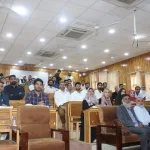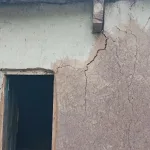As the morning mist rises over the serene landscapes of Kashmir, a hidden and invaluable ecosystem struggles for survival: its wetlands. These unique habitats, which include the iconic Wular Lake, Hokersar, and Haigam, are not only ecological treasures but also lifelines for the region’s biodiversity and human communities. Yet, they face unprecedented threats from urbanization, pollution, and climate change, making their conservation an urgent imperative.
Wetlands are often misunderstood and undervalued, perceived merely as wastelands or areas ripe for development. However, their ecological significance cannot be overstated. Wetlands act as natural water purifiers, filtering pollutants and improving water quality. They serve as buffers against floods, absorbing excess rainfall and mitigating the impacts of natural disasters. Furthermore, these ecosystems are carbon sinks, playing a vital role in climate regulation by sequestering carbon dioxide.
Kashmir’s wetlands support a rich array of biodiversity, providing habitat for numerous species of birds, fish, and other wildlife. They are crucial stopover points for migratory birds, making them a hub for birdwatchers and nature enthusiasts. The loss of these wetlands would spell disaster for the region’s flora and fauna, leading to irreversible ecological damage.
The human benefits of wetlands are equally profound. They sustain local livelihoods, particularly those of fishermen and farmers who depend on the natural resources these wetlands provide. Wetlands also have cultural and recreational value, contributing to the region’s tourism industry. The degradation of these ecosystems would not only lead to ecological consequences but also socio-economic hardships for the communities that rely on them.
Despite their importance, Kashmir’s wetlands are under severe threat. Unregulated construction, encroachment, and pollution have drastically reduced their size and health. Urban expansion has led to the draining and filling of wetlands for real estate and infrastructure projects. Agricultural runoff and untreated sewage further deteriorate water quality, pushing these ecosystems to the brink of collapse.
Addressing these challenges requires a multi-faceted approach. First and foremost, there must be stringent enforcement of environmental regulations to prevent further encroachment and pollution. The establishment of protected areas and conservation zones will help safeguard these vital habitats. Additionally, there needs to be a concerted effort to restore degraded wetlands through reforestation, removal of invasive species, and the reintroduction of native flora and fauna.
Public awareness and community participation are crucial components of wetland conservation. Educating local communities about the importance of wetlands and involving them in conservation efforts can foster a sense of stewardship and collective responsibility. Sustainable practices, such as eco-friendly agriculture and responsible tourism, should be promoted to ensure that human activities do not harm these fragile ecosystems.
Furthermore, collaboration between governmental agencies, non-governmental organizations, and international bodies is essential. Adequate funding and resources must be allocated for research, monitoring, and conservation initiatives. Policymakers must prioritize wetland preservation in their environmental agendas, recognizing the long-term benefits that healthy wetlands bring to the region.
In conclusion, the wetlands of Kashmir are not just ecological entities but vital components of the region’s environmental, economic, and cultural fabric. Their preservation is not a choice but a necessity. As we stand at the crossroads of environmental sustainability, let us heed the call of Kashmir’s wetlands, ensuring that these irreplaceable ecosystems continue to thrive for generations to come. The time to act is now, before the mist lifts and the opportunity to save these natural wonders slips away forever.
(Author is Asst Professor, Environmental Science working in HED)








